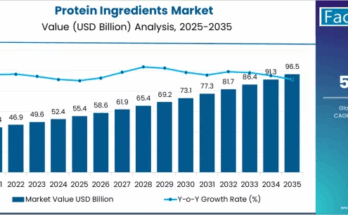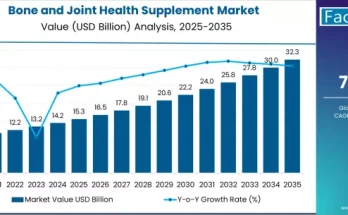The global oil soluble flavours market is projected to grow from an estimated base of USD 1.26 billion in 2023 and is forecast to reach about USD 2.55 billion by 2035, registering a compound annual growth rate (CAGR) of 4.1% during the period. This growth reflects the increasing adoption of flavour oils and oil-soluble extracts in food, beverage, personal care, and healthcare applications, driven by demand for stable, high-quality flavour profiles that integrate well in oil or fat-based formulations.
Market Drivers & Growth Catalysts
Several dynamics are fueling expansion in this market. As consumers increasingly prefer products with authentic, natural flavour profiles, formulators are turning to oil-soluble flavours extracted from herbs, fruits, spices and other botanical sources. These flavour oils offer better stability, aroma retention and compatibility in anhydrous or oil-rich matrices (such as bakery fillings, confectionery fats, dressings, or oil-based cosmetics), helping maintain consistency under processing or storage.
Advances in extraction technologies (e.g. optimized solvent extraction, encapsulation, or micro-emulsification) are improving yields, aroma fidelity, and shelf stability of oil-soluble flavour compounds. This supports broader application across food & beverage, personal care and healthcare / nutraceutical products.
Product, Application & Form Segmentation
Oil soluble flavours are offered in natural and synthetic variants, with natural botanical oils being increasingly favored due to clean-label and organic trends. Oil matrices used include medium-chain triglycerides (MCT) or oils like sunflower oil that serve as carriers for flavour compounds.
Key applications include food & beverages (bakery, dairy, confectionery, sauces, dressings, beverages), personal care products (oil-based cosmetics, fragrance blends, lip products), and healthcare / nutraceutical products that incorporate oil-soluble flavour or aroma profiles.
Formats vary, with liquid flavour oils being dominant because they are easy to blend into oil-based or fat-based systems. Powder or paste forms may also be used when the flavour is encapsulated or blended with carriers or stabilizers.
Regional Insights & Market Opportunities
In mature markets such as North America and Europe, adoption is high due to strong demand for premium, natural ingredient products, sophisticated food & beverage processing, and personal care industries requiring oil-soluble flavour carriers. These regions also have regulatory frameworks that support natural flavour labeling and clean-label claims.
The Asia-Pacific region is emerging as a high growth area: rapid expansion of the food processing industry, increasing consumer demand for exotic or culturally diverse flavour profiles, and growing personal care markets create strong demand for oil-soluble flavour oils. Emerging economies are also increasingly using local and natural botanical sources as flavour carriers, supporting regional value addition.
Regions such as Latin America, the Middle East & Africa are also seeing gradual growth as processed foods, beverage manufacturing, and cosmetic / nutraceutical industries expand, though adoption may lag due to cost or availability constraints.
Competitive Landscape & Strategic Trends
The oil soluble flavours market is competitive, including global flavour houses, botanical extract suppliers, specialty flavour producers, and oil carriers / emulsifier providers. Companies compete on flavour quality, natural sourcing, extraction purity, regulatory compliance (organic, non-GM, clean label) and ability to provide customised flavour oils tailored to regional or cultural flavour preferences.
Trends include development of natural botanical flavour oils to replace synthetic flavours, offering certified organic or non-synthetic flavour oils, and partnerships with food / beverage / personal care brands to provide tailor-made oil-soluble flavour solutions. There is also investment in refining extraction, encapsulation technologies, and carriers that improve flavour retention and stability in high-fat or high-temperature processing.
Challenges & Market Restraints
Despite promising outlook, there are constraints. Raw material volatility (botanical sources, essential oils, herbs, spices) can lead to fluctuations in supply and cost. Extraction costs and quality control requirements increase production costs for natural flavour oils. Regulatory frameworks differ by region regarding flavour labeling, purity or allowable extracts, which can complicate market entry.
In some price-sensitive markets, the premium for natural or organic oil soluble flavour oils may limit adoption versus synthetic flavour carriers. Also, achieving stability and potency under processing or storage (especially in high-heat or high-fat conditions) requires advanced formulation and carrier systems.
Forecast & Strategic Recommendations
With the market projected to grow from approximately USD 1.26 billion in 2023 to USD 2.55 billion by 2035 at a CAGR of 4.1%, the oil soluble flavours sector presents solid mid-to-long term growth opportunities. Suppliers should invest in improving extraction technologies, enhancing flavour oil purity and stability in oil carrier systems, and tailoring formulations for high-fat or high-temperature applications. Expanding manufacturing and sourcing in high-growth regions (especially Asia-Pacific) will help meet regional demand and reduce costs. Collaboration with food & beverage, personal care, and healthcare / nutraceutical brands for product innovation and regional flavor customization can further drive penetration.
Browse Full Report: https://www.factmr.com/report/oil-soluble-flavours-market
Editorial Perspective
Oil soluble flavours are becoming an essential tool in the product developer’s toolkit, enabling richer, consistent and versatile flavour profiles in oil or fat-based systems. As consumer demand for natural, clean-label and premium sensory experiences increases, these flavour oils (especially from botanical sources) are poised to play a key role in food, beverages, cosmetics and functional / healthcare products. Firms that can innovate in extraction, carrier formulation and regional flavor adaptation will be well placed to capture growth in a market projected to exceed USD 2.55 billion by 2035.



